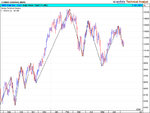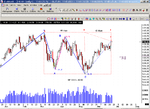trendie
Legendary member
- Messages
- 6,875
- Likes
- 1,433
Waverider,
The purpose of this particular board is to use Fibs as a basis of discussion.
And to build on that to see how each of us tweak or add to that basis to make use of Fibs.
Since many of us appear to have either attended Sandys course, or will soon ( have a nice time andrewmooton ), it is natural that forms our common knowledge, and terms of reference.
But, I want us to move beyond that, and see if we cant build a better strategy around Fibs.
re: the 2-bar reversal: I thought he used pivots, with a trigger being a single bar that both breached the Fib-level and also closed above the fib-level to buy, OR breached the Fib-level and closed below for a sell trigger.
( This is actually the reason why I believe his methods are swing-trading with a fib-spin ).
The purpose of this particular board is to use Fibs as a basis of discussion.
And to build on that to see how each of us tweak or add to that basis to make use of Fibs.
Since many of us appear to have either attended Sandys course, or will soon ( have a nice time andrewmooton ), it is natural that forms our common knowledge, and terms of reference.
But, I want us to move beyond that, and see if we cant build a better strategy around Fibs.
re: the 2-bar reversal: I thought he used pivots, with a trigger being a single bar that both breached the Fib-level and also closed above the fib-level to buy, OR breached the Fib-level and closed below for a sell trigger.
( This is actually the reason why I believe his methods are swing-trading with a fib-spin ).


